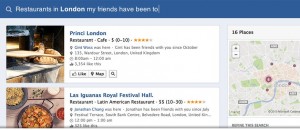 At the recent NamesCon conference in Las Vegas, much of the talk surrounded a big question: “When?” As in, when will consumers start to seriously notice the 500+ new domain choices (and growing) now populating the Internet? Though there have been ads on TV, and promotions from registrars like GoDaddy, research shows that only 25% of people are aware of the new domains
At the recent NamesCon conference in Las Vegas, much of the talk surrounded a big question: “When?” As in, when will consumers start to seriously notice the 500+ new domain choices (and growing) now populating the Internet? Though there have been ads on TV, and promotions from registrars like GoDaddy, research shows that only 25% of people are aware of the new domains
Internet users in New York may have noticed promotion for .NYC since over 72,000 names have been sold. The people in Berlin and London may have seen ads for those domains. The team at .Club have been busy and have a success story with Coffee.club, which sold for $100,000 and which has been quite successful for the owners, who migrated from a less-branded .Com name. Private equity-backed Donuts, which owns over 250 of these domains, promised more PR and promotion of the new domains at a keynote at NamesCon. The DNA report claims over 60% of people want more choice on domains – but there are significant questions as to whether businesses feel the same way. Some of the new domains have brought customer confusion, typo-squatting, cybersquatting on brand names, and even malware sites.
But the talk in the industry circles has returned to “When,” over and over again. That’s not to say that big companies haven’t already started buying their own Top Level Domains (TLDs). Barclays and BarclayCard, Marriott, Bloomberg, Coach, IBM and Citi are just a few of the household names waiting in the wings to launch their own domains. Also under-reported, L’oreal took control of .Hair last week, which likely means they’re going to use it for their own internal purposes, and not have everyone registering their own “LookAtMyBeautiful.Hair” domains on the open market. But we don’t know when they’ll lather, rinse and repeat the news. GoDaddy’s likely IPO this year may bring some of the domain news to the forefront.
Those who want to sell domains, and who have bought interesting names in these new spaces want the value of their holdings to go up – and that won’t happen till there is demand for those names. Those who provide services, like DomainSkate, (disclosure: where I consult and act as COO) which monitors company names, provides alerts if a brand name is taken in a new domain, and helps solve the issue, want to make people aware that they should be looking to purchase names defensively, and monitor the rest for trouble.
Others, who just wish to use these new domain choices for better branding if the can’t get a desirable .Com name worry that consumers will type in their “NewWebsite.XYZ” address or “NewSite.Website” and follow it with .COM by rote memory – sending traffic to the wrong place. People may not trust these new extensions, or buy them, or protect themselves if there’s not a big push by an industry player to raise awareness that these new domains exist and that they have value. At the conference, the word was that “several large brands” are planning “big moves” with new domains they own, but that we probably won’t see that till late in 2015, or at the 2016 SuperBowl Ad blitz.
This week’s win for Google of .App could immediately bring that domain into play. “App” is the generic name for the small programs we all download to our smart phones. Apple’s App Store made the company over $4.5B in 2015, and, according to the NY Times Bits Blog, Apple’s store “Serves 1.4 million apps for iPhones, iPads and iPod Touch devices. Google Play hosts 1.72 million apps, according to App Annie.” While there’s likely a significant overlap between Apple and Android apps, and many companies sell more than one app, being able to sell .App domains to a potential 1+MM companies at, say, $20/year is a nice start – and a pretty quick payback on a $25MM investment. Not a significant sum of money when looking at Google’s bottom line, but remember, Google just started selling via its own registry this year, so they could take in a nice bit of change while selling their .App domains.
Let’s also remember that Google, which has stated that it doesn’t favor the new domains in search, has been known to change its algorithms and rules as needed. Buy a .App domain, get a little better result for your app when people search for it? Maybe in the future. And by the way, Google just started selling ads inside its app store. How convenient.
Whether Google is “the one” everyone is waiting for to promote the new domains, or one of the big household brand names starts the ball rolling, it is still unclear “When” people will become more aware of the new domains. How these names are treated will influence the level of trust that consumers have in typing in these names. While it is clear that all these choices mean more ways for brands to get creative on how they promote, there’s also more potential for confusion and mistakes. We will continue to report on what we’re finding, and share our research with you. Let us know what you’re thinking in the comments.

 As 2016 comes to a close, we at the Harbrooke Group wish our clients and friends a Happy New Year and wish you all the best in 2017.
As 2016 comes to a close, we at the Harbrooke Group wish our clients and friends a Happy New Year and wish you all the best in 2017.
 It’s two weeks before a charity event that I’m
It’s two weeks before a charity event that I’m 